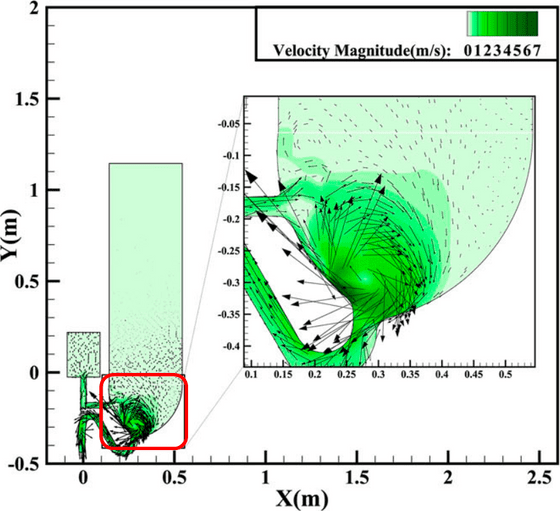Will the new coronavirus infect 'splashes when flushing the toilet'?

It is said that the new coronavirus (SARS-CoV-2) spreads through
Can a toilet promote virus transmission? From a fluid dynamics perspective: Physics of Fluids: Vol 32, No 6
https://aip.scitation.org/doi/10.1063/5.0013318
The transmission routes of the new coronavirus that have been known so far are “flying infection” through droplets of body fluid released by sneezing or coughing of the infected person, and skin, mucous membranes, doorknobs and handrails. It is roughly divided into 'contact infection'. Furthermore, such that the patient from stool of virus particles of the new coronavirus has been detected, the new coronavirus virus contained in feces of infected people become infected through other people's mouth, fecal-oral route by It is also pointed out that the infection may spread.
New coronavirus turned out to be possible via feces-GIGAZINE

Yun-yun Li, a researcher at Southeast University in China, simulated the flow of air and water in a toilet bowl, and analyzed the movement of droplets generated by flowing water.
The following is a diagram of the simulation result showing the vector of the vortex generated 1.8 seconds after the water starts flowing. When water flows from the tank into the toilet by the siphon principle , a large vortex is generated in the toilet indicated by the red frame, and part of the splash spreads out to the space above it, that is, outside the toilet seat.

The research team said of this simulation result, 'When water is run, a vortex is generated in the toilet bowl, and the resulting turbulence as a result of the centrifugal force disturbs the air above the toilet. It is thought that the aerosol particles of will be released into the air, and the virus will spread indoors and harm human health.'
In addition, the research team actually simulated the movement of the aerosol generated when water was poured. The results are shown in the figure below, which shows the positions of aerosol particles 35 seconds (left) and 70 seconds (right) after running water in different colors by height. You can see the aerosol soaring high beyond the edge of the toilet seat, which is indicated by the red frame.

From this, the research team said, 'The highest particle position reached 27.4 cm from the edge of the toilet seat at 35 seconds and 36.8 cm at 70 seconds. Since the toilet seat position is 45 cm above the floor, The actual heights of the particles are 72.4 cm and 81.8 cm from the floor.'
In addition, in the type with two inlets for flowing water, the particle height reaches 48.5 cm from the edge of the toilet seat and 93.5 cm from the floor 35 seconds after flowing water. After 70 seconds, particles rose 61.5 cm above the edge of the toilet seat and 106.5 cm above the floor. It is said that 60% of all aerosol particles generated by running water spread outside the toilet bowl beyond the edge of the toilet seat.

Based on these simulation results, the research team suggested that the following three steps should be taken when using the toilet.
1. Lower the lid before flushing the toilet water.
2. Clean the toilet seat before sitting as there may be viral particles on the seat.
3. Be sure to wash your hands after using the toilet as there may be viruses on the buttons and doorknob that flush the water.
At the end of the paper, the research team said, 'This research alerted the restroom manufacturer to the fact that it automatically lowers the lid before flushing, and that cleaning is performed before and after flushing. It could encourage toilet development,' suggesting the need for toilet manufacturers to redesign.
Related Posts:
in Science, Posted by log1l_ks







